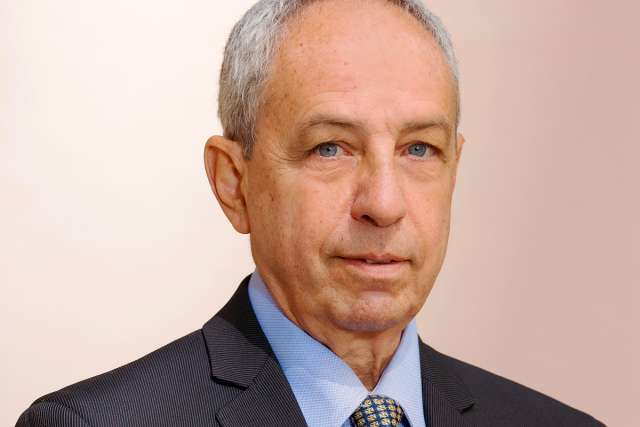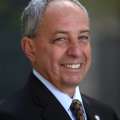This past year has been extraordinary, one in which we lived through the confluence of two life-altering events. There has been the global pandemic of COVID-19 and the movement to address racial injustice in the wake of killings of unarmed Black — and now Asian, as well — men and women. These events together have brought into sharper focus the issue of racial inequities in health care.
For UCLA Health, it indeed has been a year of challenges, and uncertainty was a significant factor in the early months of the pandemic. While we regularly plan and train for epidemics such as Ebola, SARS and MERS, and for mass-casualty events like a plane crash, earthquake or fires, SARS-CoV-2 was different and presented unique challenges.
This past year has been like a slow-motion, mass-casualty event, but in reverse. In an event like a plane crash or an earthquake, the worst part is at the beginning, when the largest numbers of injured people arrive, and then it tails off and things get better as time passes. But with the coronavirus, there was a slow buildup in the beginning, with the worst of it hitting in the middle of the pandemic, before starting to taper off, and then periodically flaring up again, usually following holidays with group gatherings.
That meant having to learn as we go. We got better at knowing how to care for people stricken with COVID-19, but then something totally unexpected would happen — like the supply chain collapsing and concerns about the prospect of limited amounts of PPE or oxygen or respirators, and we never knew if we were going to be in a situation where we might be overwhelmed with patients, like they were in New York City and northern Italy. That uncertainty made us have to plan on multiple levels to be ready for the worst-case scenarios.
To prepare ourselves, we reached out to learn everything we could from those who already had lived through a phase that we were about to face, connecting with our colleagues in China, for example, to hear directly from them about their experience. Our sister school in Zhejiang had sent 40 physicians to Wuhan during the first wave, and the understanding of the disease that they came back with and shared with us was invaluable.
We also learned that we couldn’t count on others for anything, that we might have to make do on our own. When PPE was running short, we set up our own supply chains with contacts in Asia, rented warehouses and became an FDA-approved importer. And we tapped into our own resources closer to home. When we didn’t have enough face shields, our medical school worked with UCLA’s engineering school to make them, and when there were not enough ventilators, we developed protocols for how to use one ventilator for two patients. We looked at every space in our hospitals and clinics and thought about how they could be used differently to manage many times the number of patients for which they’d originally been intended. We coordinated with other hospitals in Southern California to try to balance our patient loads and resources. We called upon our community partners — CEOs of companies and donors — to help us make wider connections to build new supply chains and find locations to do testing. No one said no.
It was an extraordinary effort at every level of our organization. I would see our health care workers outside of the hospitals, sitting on the curb taking a break, their faces marked by their goggles and masks, sweating, stressed, having spent hours treating patients who, in most cases, had no family with them, some of whom would die. Many of our health care workers have said that it felt like being in a war, but I could see in their faces that they were determined. It was incredible to see the grace, courage and conviction with which they did their work, and it felt very humbling to be in their presence.
At the same time as we were addressing the challenges of COVID-19, there was the escalation of the Black Lives Matter movement and the spotlight it has shone on racial disparities in health care that have made this pandemic so devastating for communities of color. It also has cast a harsh light on our own inequities as a health care system, and has forced us to look deeper within ourselves. That will be a process that will go on for many, many years. As individuals, and as an institution, we commit ourselves to the process of ongoing self-reflection aimed at ensuring equitable, high-quality health care for all.
There is so much work to be done on this front, for the United States as a nation to redress centuries of wrong and for UCLA Health as an institution to recognize and address our own culpability. That this has arisen at the same time as the pandemic has helped to propel it to the forefront of our thinking. The urgency surrounding our fight against COVID-19 now is being directed to the issue of structural racism and social injustice. The pandemic has thrown back the curtain obscuring the intersection of health care and race. There can be no denying that communities of color are hardest hit, both in their daily lives and by global events such as the pandemic
We could not just talk our way out of COVID; we had to take action. We cannot just talk our way out of addressing racial inequity in health care; we must take action, and there must be real outcomes that demonstrate progress. As with COVID, it will take a very disciplined, practical and consistent approach to achieve success.
In academics, we spend an enormous amount of time admiring a problem and then coming up with processes that often take many people and long periods of time to reach conclusions. But when you have a crisis, you have to solve it. We may not come up with the perfect solution the first time. And maybe not the second or the third time, either. But after several iterations, we will achieve a solution that is sound and workable. We’ve had a lot of decisions we’ve had to make over this past year when the data were incomplete and assumptions had to be made. Those decisions, however, could not be arbitrary. We had to listen to all points of view, and then we had to choose. We did not have the luxury of being able to wait. As with the pandemic — against which we harnessed the power of science and leveraged the fruits of decades of basic-science research, including studies on coronaviruses and the development of RNA vaccines, to create, test and bring forth vaccines in record time to protect our population — so, too, must we harness the power of our intellect and goodwill to address the plague of systemic racism.
That is what we need going forward, to be nimble and decisive. We don’t have the luxury to wait. Progress must occur.

